
Callicarpa americana (American beautyberry)
| While our beautyberry produces its signature fruits every year, I often don't notice them before the birds pick the plant clean. This time, though, I not only had the opportunity to photograph the berries, but, not long afterwards, I also enjoyed watching mockingbirds harvest them. |
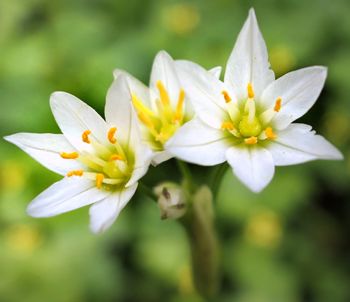
Nothoscordum bivalve (crow poison)
| This is one of the most common plants found in local yards. While it looks similar to wild onion, it has no characteristic odor. |
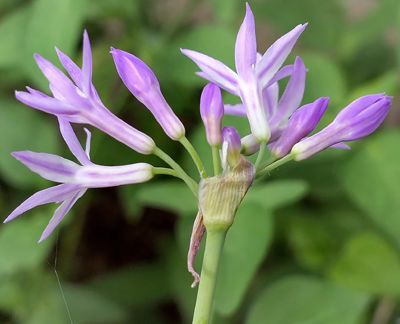
Tulbaghia violacea (society garlic)
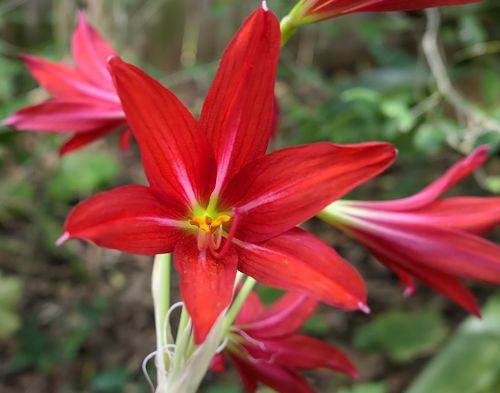
Rhodophiala advena (oxblood lily)
| Three decades ago, I planted several kinds of bulbs in our yard. They are generally forgotten in the weedier areas until the blossoms become briefly evident. It's always a nice surprise. |

Oxalis drummondii (Drummond's woodsorrel)
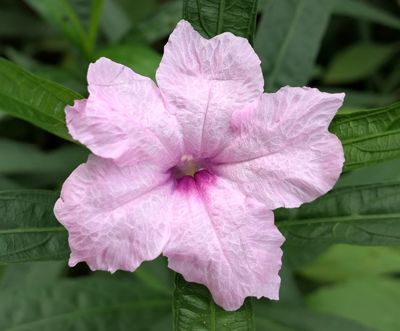
Ruellia simplex (Mexican ruellia)

Aidemona azteca (Aztec spurthroat nymph & exuviae)
| When an insect molts, the exoskeleton splits down the back, from the top of the head to the thorax, and animal squeezes out. While much of the exuviae retains its shape, the abdomen has thinner, flexible integument and so shrivels up. |

Leptoglossus sp. (leaf-footed bug nymphs)
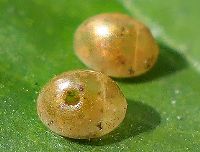
Acanthocephala sp. (coreid bug eggs)
| These eggs were parasitized, as indicated by the random spotty coloration seen within the translucent shells. Healthy eggs would contain a visible developing insect. I suspect the hole on the side of one was caused by outside predation, as there is no sign that mature parasitoids emerged. |
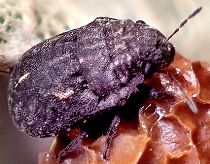
Camirus sp. (shield bug)
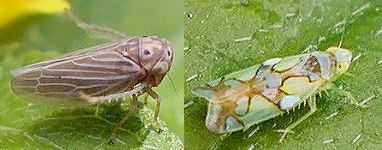
Agallia sp. & Protalebrella conica (leafhoppers)
| Leafhoppers are quite varied in appearance, but they all have one distinctive feature in common: long hind tibiae with spines. |
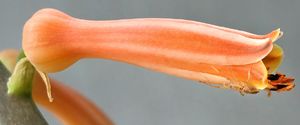
Aloe maculata (soap aloe)

Parthenocissus quinquefolia (Virginia creeper)

Gibasis pellucida (dotted bridal veil)

Malvaviscus arboreus (Turk's cap)
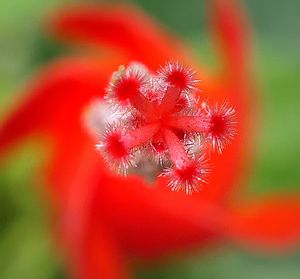
Malvaviscus arboreus (Turk's cap stigma)
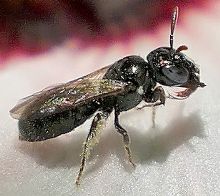
Ceratina sp. (small carpenter bee)
| Bees have both mandibles for biting and a proboscis for lapping. In this photo, the latter structure is extended. It includes a number of anatomical parts, such as the labial glossae (tongue), galea and flabellum. |

Delphinia picta (picture-winged fly)

Helcystogramma melantherella (moth larva)
| These intricately marked little caterpillars are often quite common at this time on Straggler Daisy. They fold leaves into a shelter that they secure with silk. |
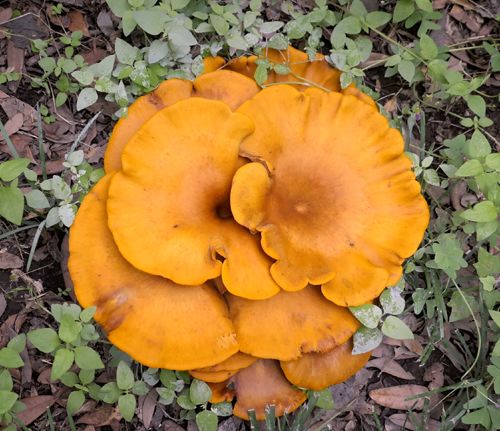
Omphalotus subilludens (southern jack-o'-lantern)
| One of the chemical compounds found in this large, common mushroom is Atromentin, an anticoagulant that also has antibacterial properties. The gray powder on the surrounding leaves consists of released spores. |
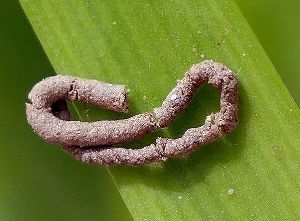
Unknown sp. (land snail dropping)

land snail shells found next to our back porch
from left to right:
Helicina orbiculata (globular drop)
Glyphyalinia sp. (glyph)
Opeas pyrgula (sharp awlsnail)
Linisia texasiana
Polygyra cereolus
|

Dicliptera brachiata (branched foldwing)
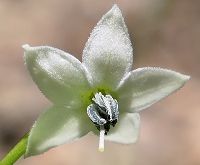
Capsicum annuum (chile pequin)
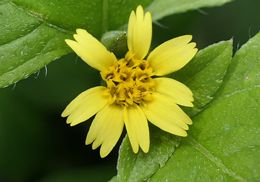
Calyptocarpus vialis (straggler daisy)
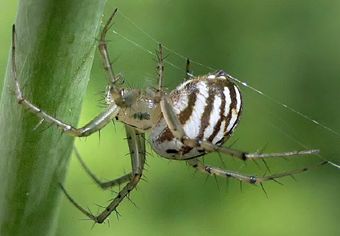
Mangora gibberosa (orbweaver)
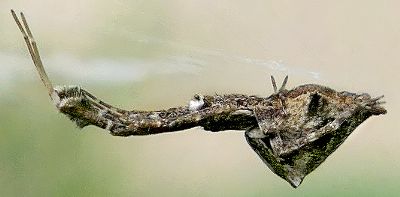
Uloborus glomosus (feather-legged orbweaver)
| This species belongs to the only spider family that lacks venom glands. I once extracted an insect from a web after I saw it caught and wrapped. Sure enough, the prey was unharmed and flew off after the silk was removed! The individual shown below is at the far left of her egg sacs. |

Uloborus glomosus (feather-legged orbweaver & egg sacs)

![]()